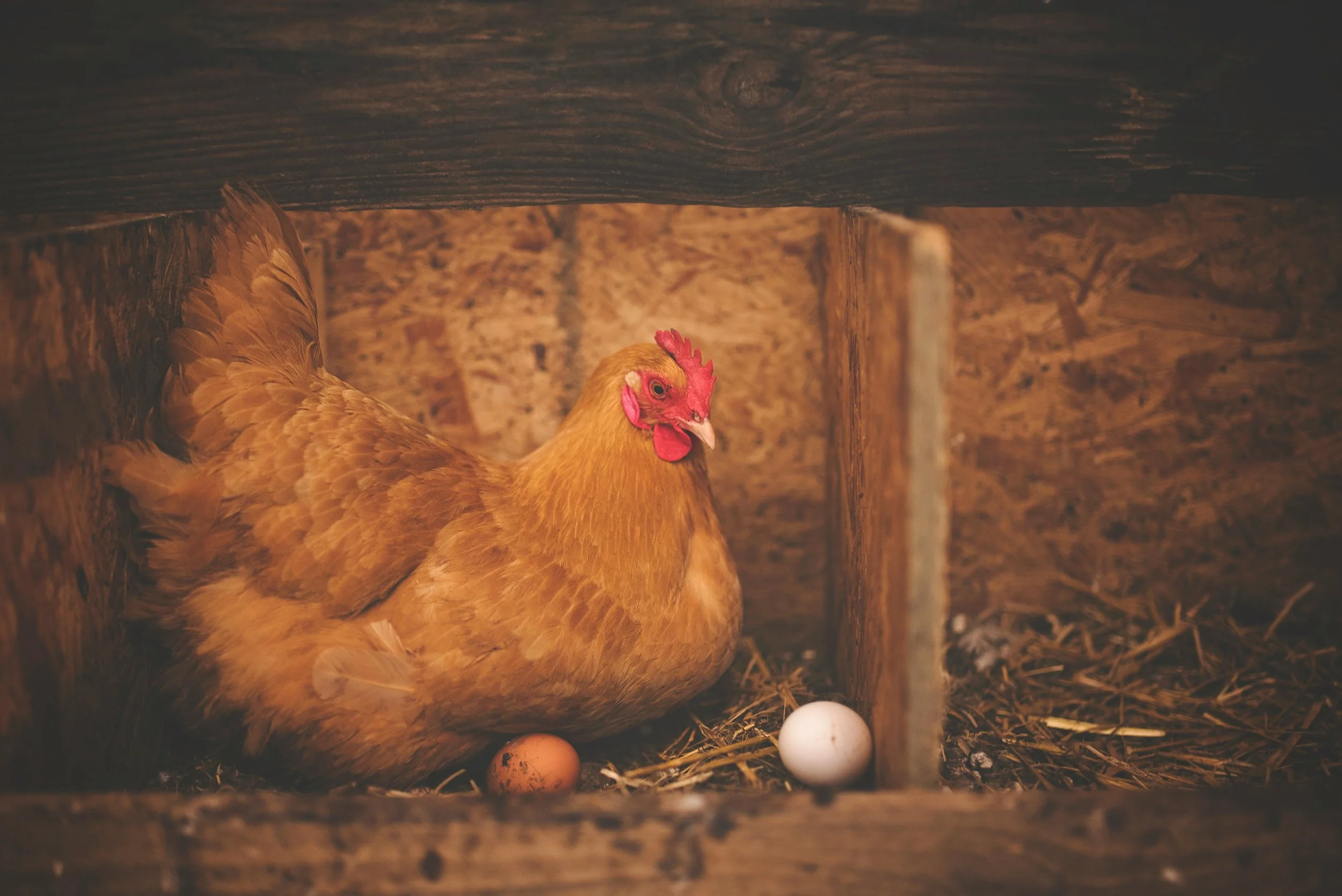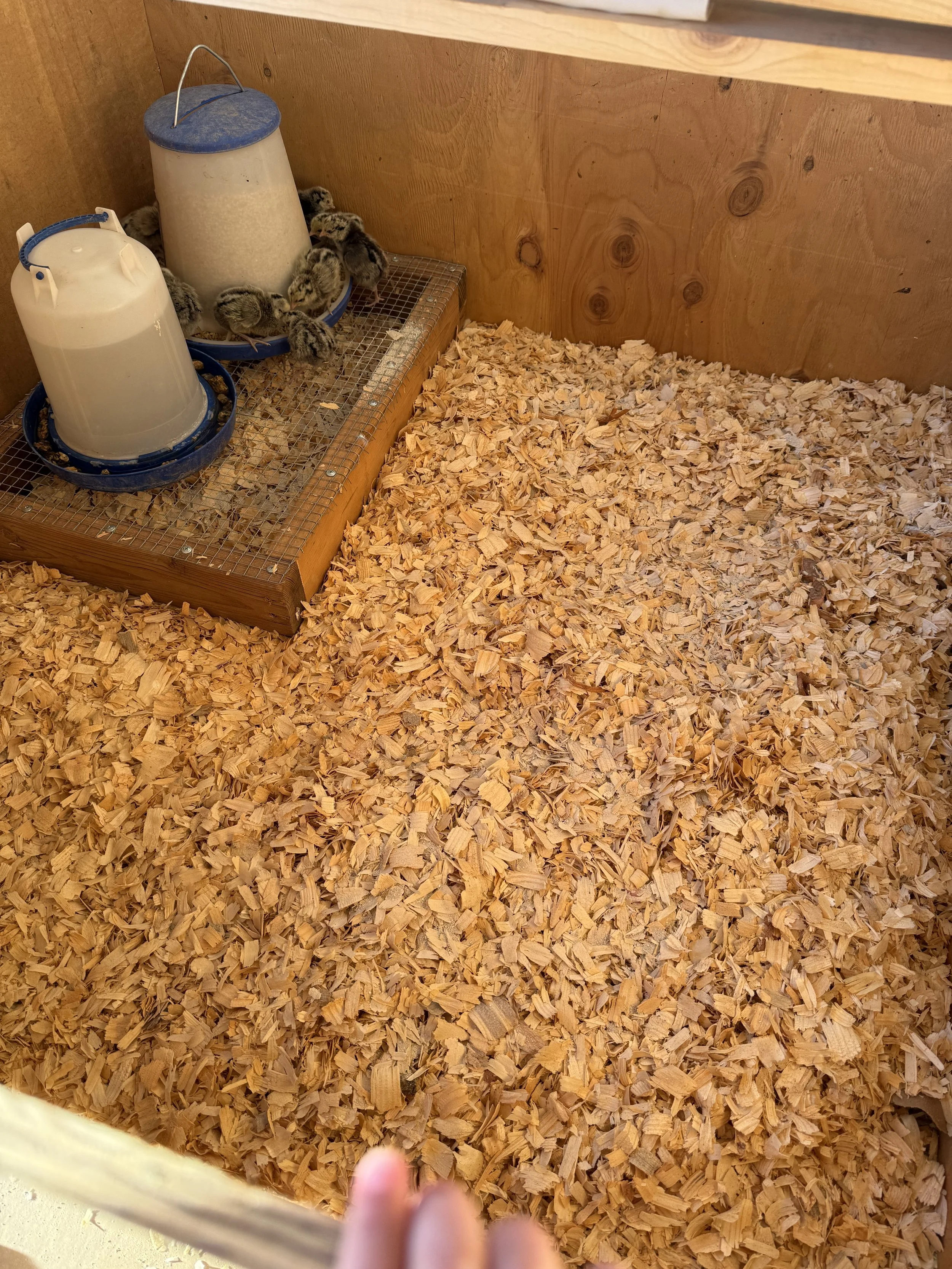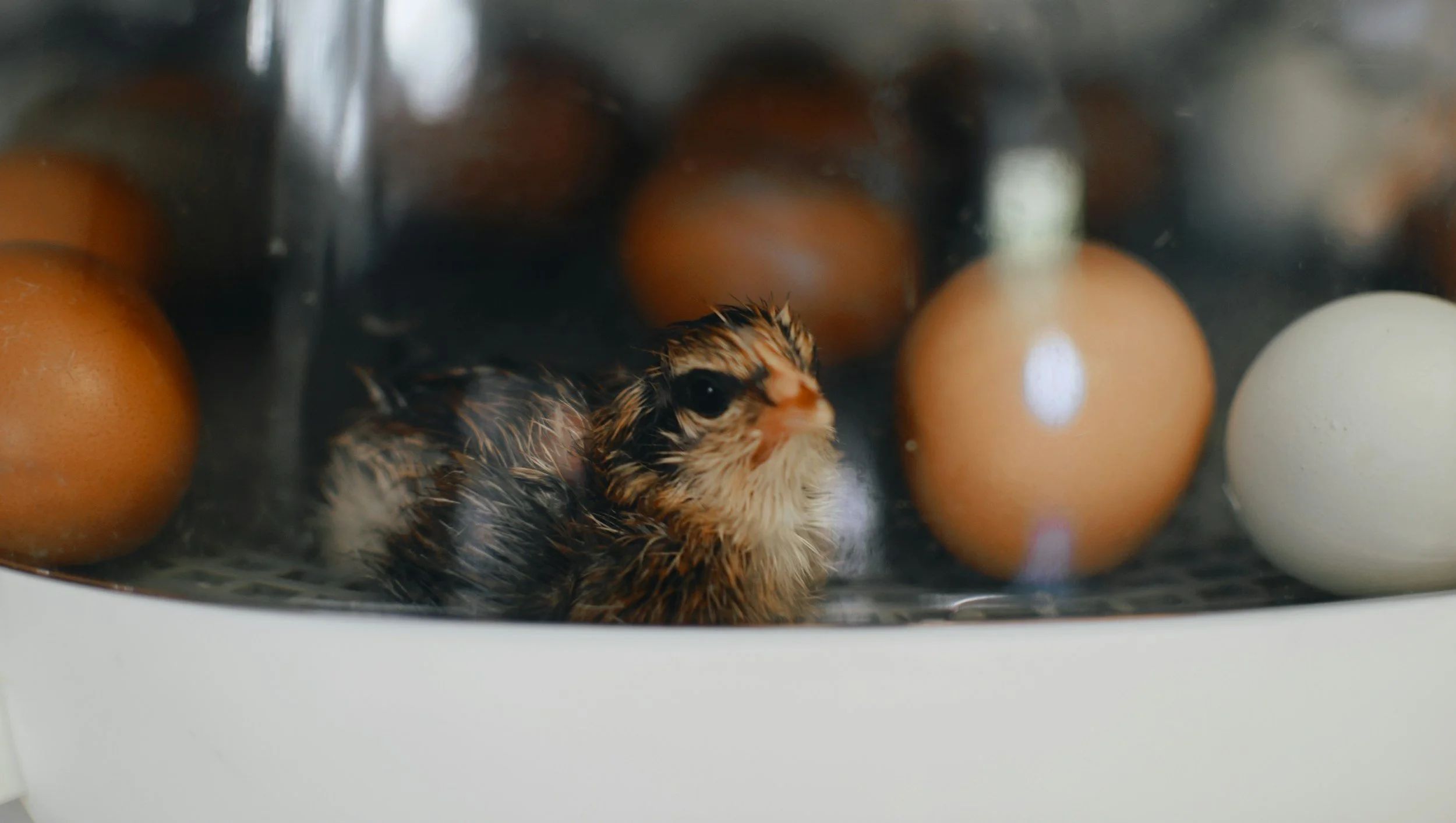Preparing for Breeding Season
A Guide For Chicken Keepers
Breeding season is an exciting time for chicken keepers, bringing the promise of new life and the opportunity to expand your flock. However, chicken coop preparation is key to ensuring a successful and stress-free breeding period. This guide will walk you through the essentials of setting up nesting boxes and other important considerations to make this breeding season a triumph in successful chicken breeding.
Understanding Breeding Season
Breeding season is a pivotal time in the life cycle of your flock, marking the period when hens are most inclined to lay fertile eggs and roosters are ready to mate. For chicken keepers, this season offers the exciting opportunity to expand your flock and witness the wonder of new life. However, understanding the nuances of the breeding season is crucial for ensuring a smooth and successful experience.
Timing and Indicators
Typically, breeding season aligns with the longer daylight hours of spring and early summer. This natural rhythm is driven by increased light exposure, which stimulates hens' reproductive systems. In Arizona, where daylight can be plentiful, you might notice your flock entering breeding mode as early as February, making it essential to prepare in advance.
Watch for key signs that indicate your hens are ready to breed. These include increased egg production, nesting behavior, and more frequent visits to the nesting boxes. Hens may also exhibit signs of broodiness, such as spending extended periods sitting on eggs and displaying protective behaviors. Roosters, on the other hand, may become more active and vocal, asserting their presence within the flock.
Importance of Preparation
Proper preparation for the breeding season is essential for several reasons. First, it ensures that your hens have a safe and comfortable environment to lay and incubate eggs. This involves setting up adequate nesting boxes, providing the right nutrition, and minimizing stressors in the coop.
Additionally, understanding the dynamics of the breeding season allows you to manage your flock more effectively. This includes monitoring the health and behavior of both hens and roosters, ensuring optimal rooster-to-hen ratios, and addressing any behavioral issues that may arise.
Setting Up Nesting Boxes
Nesting boxes are the cornerstone of a productive breeding season, providing hens with a safe and comfortable space to lay and incubate their eggs. Properly setting up these boxes is crucial for encouraging natural behaviors and ensuring the health and safety of both hens and their future chicks.
Choosing the Right Nesting Box
Selecting the appropriate nesting box is the first step in preparing for the breeding season. Consider the size and material of the box, ensuring it accommodates your hens comfortably. A standard size of about 12x12 inches is suitable for most breeds, providing enough room for the hen to turn around and settle in. Wooden boxes are a popular choice for their durability and insulation properties, but plastic or metal can also be effective, particularly in Arizona's climate where temperature regulation is key.
Ideal Placement and Setup Tips
Placement of the nesting boxes is equally important. Position them in a quiet, low-traffic area of the coop to minimize disturbances and stress. Elevating the boxes slightly off the ground can help deter pests and keep the area clean. Ensure there is easy access for the hens, as well as for you, to collect eggs and maintain the boxes.
Consider the lighting in the nesting area. While hens prefer a dimly lit space for laying, ensure there's enough natural light to encourage egg production. Installing curtains or partial covers on the boxes can help create a more secluded environment, promoting a sense of security for the hens.
Materials and Bedding
The choice of bedding material can significantly impact the comfort and cleanliness of the nesting boxes. Soft materials like straw, hay, or wood shavings provide a comfortable base for the hens and help cushion the eggs. Regularly check and refresh the bedding to maintain a hygienic environment, reducing the risk of egg contamination and promoting healthier hatching conditions.
Adding a handful of aromatic herbs such as lavender or mint can also enhance the nesting experience. These herbs not only provide a pleasant scent but also have natural insect-repelling properties, helping to keep the nesting area pest-free.
By carefully setting up your nesting boxes, you're laying the groundwork for a successful breeding season. Providing a safe, comfortable, and clean environment encourages natural laying behaviors and supports the overall health and productivity of your flock.
Creating a Comfortable Environment
A comfortable and stress-free environment is essential for a successful breeding season. Ensuring that your hens feel secure and at ease can significantly enhance their laying and brooding behaviors, leading to healthier eggs and more successful hatching.
Temperature and Lighting Considerations
In Arizona's climate, managing temperature is crucial. While the breeding season often coincides with milder spring temperatures, fluctuations can still occur. Make sure your coop is well-ventilated to prevent overheating, but also insulated enough to protect against any unexpected cold snaps. Providing a consistent and comfortable temperature helps maintain your hens' health and encourages regular laying patterns.
Lighting also plays a vital role. Extended daylight hours naturally stimulate hens to lay more eggs, so consider using artificial lighting to supplement natural light if necessary. Aim for about 14-16 hours of light per day to optimize egg production. However, ensure that there are darker, secluded areas within the coop for hens to nest peacefully.
Ensuring Privacy and Security
Hens need a sense of privacy and security to lay and brood effectively. Reduce noise and activity around the nesting area to minimize stress. You might consider adding barriers or curtains to nesting boxes to create a more secluded space, helping hens feel safe and undisturbed.
Security from predators is another critical aspect. Regularly inspect the coop for any potential entry points and reinforce them to prevent unwanted visitors. A secure environment not only protects your hens but also gives them the confidence to focus on nesting and brooding.
Reducing Stress and Disturbances
Maintaining a calm atmosphere in the coop is essential. Limit changes to the environment during the breeding season and try to keep a consistent routine. Familiarity helps reduce stress, allowing your hens to concentrate on their nesting duties.
Consider playing soft, calming music or nature sounds to further soothe your flock. This can mask external noises and create a tranquil setting conducive to laying and brooding.
Nutrition and Health: Fueling Breeding Success
Proper nutrition is the backbone of a successful breeding season, providing your flock with the energy and nutrients they need to produce healthy eggs and support robust development. By focusing on a balanced diet and addressing specific health needs, you can enhance your hens' productivity and ensure the well-being of both the hens and their future chicks.
Dietary Needs During Breeding Season
During the breeding season, hens require a diet rich in protein and calcium to support egg production and shell formation. Consider providing a layer feed that contains at least 16-18% protein, supplemented with additional calcium sources like oyster shells or crushed eggshells. This ensures that your hens have the necessary building blocks for producing strong, healthy eggs.
Incorporating a variety of grains, seeds, and greens can also enhance nutritional diversity. Offering treats like mealworms or sunflower seeds can provide extra protein and energy, but be mindful of portion sizes to maintain a balanced diet.
Supplements and Additives for Optimal Health
In addition to a nutritious diet, consider adding specific supplements to support your flock's health during breeding season. Vitamins and minerals, such as Vitamin D and phosphorus, are crucial for egg production and overall health. You might also include probiotics to promote gut health and boost immunity, helping your hens stay resilient against stress and illness.
Herbal supplements, like oregano or thyme, can offer natural antibacterial and respiratory support, particularly beneficial in Arizona's dusty environment. These can be mixed into feed or water, providing an easy way to enhance your flock's diet.
Monitoring and Managing Hen Health and Behavior
Regularly observe your hens for any signs of health issues or stress. Look for changes in behavior, appetite, or egg production, which could indicate underlying problems. Maintaining a clean and hygienic coop environment is essential to prevent disease and promote overall health.
Ensure that your hens have access to fresh, clean water at all times. Hydration is especially important in Arizona's climate, where dehydration can quickly impact health and productivity.
Managing Roosters: Key Players in Breeding Success
Roosters play a crucial role in the breeding process, ensuring that your hens produce fertile eggs. However, managing roosters effectively is essential for maintaining harmony within the flock and optimizing breeding outcomes. Here's what you need to know about handling these key players during breeding season.
Role of Roosters in Breeding
Roosters are responsible for fertilizing eggs, making them an integral part of the breeding process. A healthy, active rooster can significantly enhance egg fertility rates, leading to a more successful hatching season. Understanding their role helps you manage your flock dynamics more effectively and ensures that your breeding efforts yield the desired results.
Ensuring Proper Rooster-to-Hen Ratios
Maintaining the right rooster-to-hen ratio is critical for minimizing stress and aggression within the flock. Typically, one rooster can manage a group of 8-12 hens effectively. This ratio ensures that each hen receives adequate attention without overwhelming the rooster or causing excessive competition among hens.
In larger flocks, consider having multiple roosters, but be mindful of their interactions. Roosters can become territorial or aggressive if they feel their dominance is threatened, so it's important to monitor their behavior and separate them if necessary to prevent conflicts.
Tips for Managing Rooster Behavior
Roosters can exhibit assertive behaviors, especially during breeding season. To manage this, ensure they have ample space to roam and establish their territory. Providing distractions, such as toys or perches, can help alleviate boredom and reduce aggressive tendencies.
Regularly observe your roosters for signs of stress or aggression towards hens. If a rooster becomes overly aggressive, consider temporarily separating him to allow the flock to settle. Sometimes, adjusting the flock dynamics or introducing new hens can help balance behaviors.
Incubation and Hatching: Welcoming New Life
As breeding season progresses, the anticipation of hatching new chicks becomes an exciting focus for chicken keepers. Understanding the incubation process and preparing for hatching are crucial steps in ensuring a successful outcome. Whether you choose natural or artificial methods, here's how to navigate this critical phase.
Natural vs. Artificial Incubation Methods
Natural incubation involves allowing a broody hen to sit on and hatch her eggs. This method can be highly effective, as the hen instinctively knows how to regulate temperature and humidity, turning the eggs as needed. If you have a broody hen, provide her with a quiet, comfortable nesting area where she can focus on her brooding duties without disturbance.
Artificial incubation, on the other hand, involves using an incubator to hatch eggs. This method allows for greater control over environmental conditions and can be a practical choice if you have multiple eggs or lack a broody hen. When using an incubator, ensure it maintains a consistent temperature (around 99.5°F) and humidity level (40-50% during incubation, increasing to 65-70% during hatching).
Monitoring Egg Development
Regardless of the method, monitoring egg development is essential. Candling, which involves shining a light through the egg to observe the embryo's progress, can help you assess viability and development. Perform candling at key stages, such as days 7 and 14, to check for signs of growth and remove any non-viable eggs.
Preparing for Hatching and Chick Care
As hatching day approaches, ensure that the environment is ready for the arrival of new chicks. If using an incubator, stop turning the eggs three days before the expected hatch date and increase humidity to support the hatching process. For natural incubation, provide the broody hen with extra food and water, as she may not leave the nest often.
Once chicks begin to hatch, allow them time to fully emerge from their shells and dry off before moving them to a brooder. The brooder should be warm (around 95°F initially) and equipped with bedding, food, and water. Monitor the chicks closely for the first few days, ensuring they are eating, drinking, and staying warm.
By understanding the incubation and hatching process, you can support the successful arrival of new chicks and ensure they get off to a healthy start. Whether you choose natural or artificial methods, careful preparation and monitoring are key to welcoming new life into your flock.
Troubleshooting Common Issues: Navigating Challenges
Even with the best preparation, breeding season can present a variety of challenges that require quick thinking and effective solutions. From infertility to behavioral problems, understanding how to troubleshoot common issues can help you maintain a healthy and productive flock.
Addressing Infertility and Egg Production Problems
Infertility can be a frustrating issue during breeding season. If you notice a lack of fertile eggs, consider evaluating your rooster-to-hen ratio, as well as the health and age of your roosters. Fertility can decline in older roosters, so introducing a younger rooster may help improve results.
Egg production issues, such as soft or misshapen eggs, can often be traced back to nutritional deficiencies. Ensure your hens are receiving adequate calcium and protein, and consider adding supplements if necessary. Stress and environmental factors can also impact egg production, so maintaining a calm and stable environment is crucial.
Managing Broodiness and Aggressive Behavior
Broodiness is a natural behavior in hens during breeding season, but it can sometimes lead to aggressive or territorial actions. If a hen becomes overly broody and disruptive, consider isolating her temporarily to break the cycle. Providing distractions, such as foraging opportunities or new perches, can also help alleviate broody behavior.
Aggression, particularly among roosters, can escalate during breeding season. Monitor your flock for signs of fighting or bullying, and separate aggressive individuals if needed. Sometimes, adjusting the flock dynamics or providing more space can help reduce tension and promote harmony.
Solutions for Common Breeding Season Challenges
In addition to the issues mentioned above, breeding season can bring other challenges, such as egg eating or nest abandonment. For egg eating, ensure that eggs are collected frequently and that nesting boxes are comfortable and secure to discourage the behavior. If a hen abandons her nest, consider using an incubator to continue the hatching process.
Breeding season is a time of anticipation and growth for any chicken keeper, offering the opportunity to expand your flock and experience the joys of new life. By taking the time to prepare your environment, nesting boxes, nutrition, and flock dynamics, you set the stage for a successful and rewarding breeding period.
Understanding the intricacies of the breeding season—from managing roosters and ensuring proper nutrition to tackling common challenges—empowers you to create a supportive and thriving environment for your flock. Whether you're relying on natural incubation or using modern technology, each step you take contributes to the health and productivity of your chickens.
As you embark on this exciting journey, remember that patience and observation are key. Every flock is unique, and adapting to their specific needs will ensure that you not only meet the challenges of the breeding season but also enjoy its many rewards. With careful planning and a proactive approach, you'll be well-equipped to welcome new life into your flock and continue your journey as a successful chicken keeper.
Ready to put these tips into action? Start preparing today and look forward to a flourishing flock and a successful breeding season ahead!







